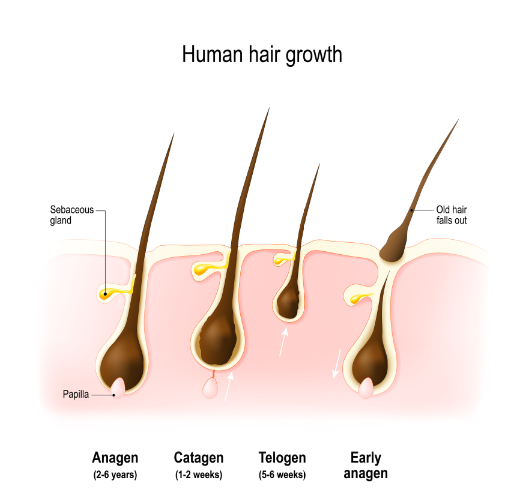 Introduction
Over 80 million Americans experience hair loss with as many as 25% seeing the first signs by the time that they are 21 years old. Hair loss has a wide variety of causes ranging from heredity and medical conditions to hormones, diet, stress and simply poor hair care practices. To match the range of causes, medical professionals have identified a range of solutions to address the causes.
The amount of hair loss and the percentage of people who experience it increases with age. So, while topical (minoxidil), oral (finasteride) and vitamin or botanical solutions often help arrest hair loss, some physicians have recommended alternatives to increase the growth cycle and to generate new hair growth in areas that have seen significant hair loss. One recommended procedure is PRP (platelet rich plasma) injections, with and without adult stem cells.
What is the PRP Procedure?
Our blood contains two different elements – red blood cells and plasma. The plasma contains white blood cells and platelets. Platelets are rich in growth factors. PRP has been used for decades to increase healing injured tendons, ligaments and muscles, for example in joints with arthritis and more recently to help increase collagen production in facial skin rejuvenation. PRP is a three-step process by which a small amount of a patient’s blood is drawn (Step 1) and put in a centrifuge. Spinning the blood allows it to be separated, obtaining the platelet rich plasma (PRP) (Step2). The PRP is then placed in a syringe and injected into the area of thinning hair (Step 3) at the level of the hair follicle. Combining the PRP with thrombin or calcium chloride results in the production of growth factors (cytokines). By performing multiple injections about one half an inch apart in the target area, the PRP stimulates growth of existing hair follicles and generation of new growth. Each hair follicle can have multiple hairs growing from it. The PRP increases blood supply to the hair follicle and increases the thickness of the hair shaft as a result.
The standard protocol is for this less than one-hour procedure to be performed once a month for three months initially and then once every four to six months to continue the growth cycle. Information from realself shows that 73% of patients believe that it is worth it. Research from India indicates that average increase in hair growth experienced was approximately 30%.
PRP with Adult Stem Cells
Recently, there has been more and more interest in the use of human adult stem cells in a wide range of treatments. One of the most promising has been in the field of hair restoration. The standard PRP protocol (described above) is augmented with adult stems cells derived from adipose fat. The doctor uses liposuction to extract 40 to 100ccs of adipose fat. This fat is then filtered to purify it and it is added to the PRP solution. The rationale behind this is that the purified fat contains adult stem cells that both provide energy for the new growth and reduce the concentration of androgens like testosterone in the tissue that may be limited growth. While this procedure is not currently FDA approved, a series of studies are currently underway to test the effectiveness of PRP with adult stem cells in hair restoration.
One of the benefits of PRP, with or without adult stem cells is that the procedure uses the patient’s own blood. This means that there is no risk of getting a communicable disease due to introduction of outside agents. It is important to note that there are some situations in which PRP may not be recommended including being on blood thinners, having acute or chronic infections or certain diseases.
Understanding the causes of your particular hair loss and identifying the stage of hair loss is very important in developing a treatment plan that can range from addressing the underlying cause (medical or hormonal) to topical or surgical alternatives. This includes determine whether or not PRP is appropriate in your situation. The doctors associated with the Capily Institute can help diagnose and treat all forms of hair loss, recommending the best strategy for hair restoration or replacement.
Introduction
Over 80 million Americans experience hair loss with as many as 25% seeing the first signs by the time that they are 21 years old. Hair loss has a wide variety of causes ranging from heredity and medical conditions to hormones, diet, stress and simply poor hair care practices. To match the range of causes, medical professionals have identified a range of solutions to address the causes.
The amount of hair loss and the percentage of people who experience it increases with age. So, while topical (minoxidil), oral (finasteride) and vitamin or botanical solutions often help arrest hair loss, some physicians have recommended alternatives to increase the growth cycle and to generate new hair growth in areas that have seen significant hair loss. One recommended procedure is PRP (platelet rich plasma) injections, with and without adult stem cells.
What is the PRP Procedure?
Our blood contains two different elements – red blood cells and plasma. The plasma contains white blood cells and platelets. Platelets are rich in growth factors. PRP has been used for decades to increase healing injured tendons, ligaments and muscles, for example in joints with arthritis and more recently to help increase collagen production in facial skin rejuvenation. PRP is a three-step process by which a small amount of a patient’s blood is drawn (Step 1) and put in a centrifuge. Spinning the blood allows it to be separated, obtaining the platelet rich plasma (PRP) (Step2). The PRP is then placed in a syringe and injected into the area of thinning hair (Step 3) at the level of the hair follicle. Combining the PRP with thrombin or calcium chloride results in the production of growth factors (cytokines). By performing multiple injections about one half an inch apart in the target area, the PRP stimulates growth of existing hair follicles and generation of new growth. Each hair follicle can have multiple hairs growing from it. The PRP increases blood supply to the hair follicle and increases the thickness of the hair shaft as a result.
The standard protocol is for this less than one-hour procedure to be performed once a month for three months initially and then once every four to six months to continue the growth cycle. Information from realself shows that 73% of patients believe that it is worth it. Research from India indicates that average increase in hair growth experienced was approximately 30%.
PRP with Adult Stem Cells
Recently, there has been more and more interest in the use of human adult stem cells in a wide range of treatments. One of the most promising has been in the field of hair restoration. The standard PRP protocol (described above) is augmented with adult stems cells derived from adipose fat. The doctor uses liposuction to extract 40 to 100ccs of adipose fat. This fat is then filtered to purify it and it is added to the PRP solution. The rationale behind this is that the purified fat contains adult stem cells that both provide energy for the new growth and reduce the concentration of androgens like testosterone in the tissue that may be limited growth. While this procedure is not currently FDA approved, a series of studies are currently underway to test the effectiveness of PRP with adult stem cells in hair restoration.
One of the benefits of PRP, with or without adult stem cells is that the procedure uses the patient’s own blood. This means that there is no risk of getting a communicable disease due to introduction of outside agents. It is important to note that there are some situations in which PRP may not be recommended including being on blood thinners, having acute or chronic infections or certain diseases.
Understanding the causes of your particular hair loss and identifying the stage of hair loss is very important in developing a treatment plan that can range from addressing the underlying cause (medical or hormonal) to topical or surgical alternatives. This includes determine whether or not PRP is appropriate in your situation. The doctors associated with the Capily Institute can help diagnose and treat all forms of hair loss, recommending the best strategy for hair restoration or replacement. How Does PRP Stimulate Hair Growth?
By John C. Anderson Ph.D.
 Introduction
Over 80 million Americans experience hair loss with as many as 25% seeing the first signs by the time that they are 21 years old. Hair loss has a wide variety of causes ranging from heredity and medical conditions to hormones, diet, stress and simply poor hair care practices. To match the range of causes, medical professionals have identified a range of solutions to address the causes.
The amount of hair loss and the percentage of people who experience it increases with age. So, while topical (minoxidil), oral (finasteride) and vitamin or botanical solutions often help arrest hair loss, some physicians have recommended alternatives to increase the growth cycle and to generate new hair growth in areas that have seen significant hair loss. One recommended procedure is PRP (platelet rich plasma) injections, with and without adult stem cells.
What is the PRP Procedure?
Our blood contains two different elements – red blood cells and plasma. The plasma contains white blood cells and platelets. Platelets are rich in growth factors. PRP has been used for decades to increase healing injured tendons, ligaments and muscles, for example in joints with arthritis and more recently to help increase collagen production in facial skin rejuvenation. PRP is a three-step process by which a small amount of a patient’s blood is drawn (Step 1) and put in a centrifuge. Spinning the blood allows it to be separated, obtaining the platelet rich plasma (PRP) (Step2). The PRP is then placed in a syringe and injected into the area of thinning hair (Step 3) at the level of the hair follicle. Combining the PRP with thrombin or calcium chloride results in the production of growth factors (cytokines). By performing multiple injections about one half an inch apart in the target area, the PRP stimulates growth of existing hair follicles and generation of new growth. Each hair follicle can have multiple hairs growing from it. The PRP increases blood supply to the hair follicle and increases the thickness of the hair shaft as a result.
The standard protocol is for this less than one-hour procedure to be performed once a month for three months initially and then once every four to six months to continue the growth cycle. Information from realself shows that 73% of patients believe that it is worth it. Research from India indicates that average increase in hair growth experienced was approximately 30%.
PRP with Adult Stem Cells
Recently, there has been more and more interest in the use of human adult stem cells in a wide range of treatments. One of the most promising has been in the field of hair restoration. The standard PRP protocol (described above) is augmented with adult stems cells derived from adipose fat. The doctor uses liposuction to extract 40 to 100ccs of adipose fat. This fat is then filtered to purify it and it is added to the PRP solution. The rationale behind this is that the purified fat contains adult stem cells that both provide energy for the new growth and reduce the concentration of androgens like testosterone in the tissue that may be limited growth. While this procedure is not currently FDA approved, a series of studies are currently underway to test the effectiveness of PRP with adult stem cells in hair restoration.
One of the benefits of PRP, with or without adult stem cells is that the procedure uses the patient’s own blood. This means that there is no risk of getting a communicable disease due to introduction of outside agents. It is important to note that there are some situations in which PRP may not be recommended including being on blood thinners, having acute or chronic infections or certain diseases.
Understanding the causes of your particular hair loss and identifying the stage of hair loss is very important in developing a treatment plan that can range from addressing the underlying cause (medical or hormonal) to topical or surgical alternatives. This includes determine whether or not PRP is appropriate in your situation. The doctors associated with the Capily Institute can help diagnose and treat all forms of hair loss, recommending the best strategy for hair restoration or replacement.
Introduction
Over 80 million Americans experience hair loss with as many as 25% seeing the first signs by the time that they are 21 years old. Hair loss has a wide variety of causes ranging from heredity and medical conditions to hormones, diet, stress and simply poor hair care practices. To match the range of causes, medical professionals have identified a range of solutions to address the causes.
The amount of hair loss and the percentage of people who experience it increases with age. So, while topical (minoxidil), oral (finasteride) and vitamin or botanical solutions often help arrest hair loss, some physicians have recommended alternatives to increase the growth cycle and to generate new hair growth in areas that have seen significant hair loss. One recommended procedure is PRP (platelet rich plasma) injections, with and without adult stem cells.
What is the PRP Procedure?
Our blood contains two different elements – red blood cells and plasma. The plasma contains white blood cells and platelets. Platelets are rich in growth factors. PRP has been used for decades to increase healing injured tendons, ligaments and muscles, for example in joints with arthritis and more recently to help increase collagen production in facial skin rejuvenation. PRP is a three-step process by which a small amount of a patient’s blood is drawn (Step 1) and put in a centrifuge. Spinning the blood allows it to be separated, obtaining the platelet rich plasma (PRP) (Step2). The PRP is then placed in a syringe and injected into the area of thinning hair (Step 3) at the level of the hair follicle. Combining the PRP with thrombin or calcium chloride results in the production of growth factors (cytokines). By performing multiple injections about one half an inch apart in the target area, the PRP stimulates growth of existing hair follicles and generation of new growth. Each hair follicle can have multiple hairs growing from it. The PRP increases blood supply to the hair follicle and increases the thickness of the hair shaft as a result.
The standard protocol is for this less than one-hour procedure to be performed once a month for three months initially and then once every four to six months to continue the growth cycle. Information from realself shows that 73% of patients believe that it is worth it. Research from India indicates that average increase in hair growth experienced was approximately 30%.
PRP with Adult Stem Cells
Recently, there has been more and more interest in the use of human adult stem cells in a wide range of treatments. One of the most promising has been in the field of hair restoration. The standard PRP protocol (described above) is augmented with adult stems cells derived from adipose fat. The doctor uses liposuction to extract 40 to 100ccs of adipose fat. This fat is then filtered to purify it and it is added to the PRP solution. The rationale behind this is that the purified fat contains adult stem cells that both provide energy for the new growth and reduce the concentration of androgens like testosterone in the tissue that may be limited growth. While this procedure is not currently FDA approved, a series of studies are currently underway to test the effectiveness of PRP with adult stem cells in hair restoration.
One of the benefits of PRP, with or without adult stem cells is that the procedure uses the patient’s own blood. This means that there is no risk of getting a communicable disease due to introduction of outside agents. It is important to note that there are some situations in which PRP may not be recommended including being on blood thinners, having acute or chronic infections or certain diseases.
Understanding the causes of your particular hair loss and identifying the stage of hair loss is very important in developing a treatment plan that can range from addressing the underlying cause (medical or hormonal) to topical or surgical alternatives. This includes determine whether or not PRP is appropriate in your situation. The doctors associated with the Capily Institute can help diagnose and treat all forms of hair loss, recommending the best strategy for hair restoration or replacement.
 Introduction
Over 80 million Americans experience hair loss with as many as 25% seeing the first signs by the time that they are 21 years old. Hair loss has a wide variety of causes ranging from heredity and medical conditions to hormones, diet, stress and simply poor hair care practices. To match the range of causes, medical professionals have identified a range of solutions to address the causes.
The amount of hair loss and the percentage of people who experience it increases with age. So, while topical (minoxidil), oral (finasteride) and vitamin or botanical solutions often help arrest hair loss, some physicians have recommended alternatives to increase the growth cycle and to generate new hair growth in areas that have seen significant hair loss. One recommended procedure is PRP (platelet rich plasma) injections, with and without adult stem cells.
What is the PRP Procedure?
Our blood contains two different elements – red blood cells and plasma. The plasma contains white blood cells and platelets. Platelets are rich in growth factors. PRP has been used for decades to increase healing injured tendons, ligaments and muscles, for example in joints with arthritis and more recently to help increase collagen production in facial skin rejuvenation. PRP is a three-step process by which a small amount of a patient’s blood is drawn (Step 1) and put in a centrifuge. Spinning the blood allows it to be separated, obtaining the platelet rich plasma (PRP) (Step2). The PRP is then placed in a syringe and injected into the area of thinning hair (Step 3) at the level of the hair follicle. Combining the PRP with thrombin or calcium chloride results in the production of growth factors (cytokines). By performing multiple injections about one half an inch apart in the target area, the PRP stimulates growth of existing hair follicles and generation of new growth. Each hair follicle can have multiple hairs growing from it. The PRP increases blood supply to the hair follicle and increases the thickness of the hair shaft as a result.
The standard protocol is for this less than one-hour procedure to be performed once a month for three months initially and then once every four to six months to continue the growth cycle. Information from realself shows that 73% of patients believe that it is worth it. Research from India indicates that average increase in hair growth experienced was approximately 30%.
PRP with Adult Stem Cells
Recently, there has been more and more interest in the use of human adult stem cells in a wide range of treatments. One of the most promising has been in the field of hair restoration. The standard PRP protocol (described above) is augmented with adult stems cells derived from adipose fat. The doctor uses liposuction to extract 40 to 100ccs of adipose fat. This fat is then filtered to purify it and it is added to the PRP solution. The rationale behind this is that the purified fat contains adult stem cells that both provide energy for the new growth and reduce the concentration of androgens like testosterone in the tissue that may be limited growth. While this procedure is not currently FDA approved, a series of studies are currently underway to test the effectiveness of PRP with adult stem cells in hair restoration.
One of the benefits of PRP, with or without adult stem cells is that the procedure uses the patient’s own blood. This means that there is no risk of getting a communicable disease due to introduction of outside agents. It is important to note that there are some situations in which PRP may not be recommended including being on blood thinners, having acute or chronic infections or certain diseases.
Understanding the causes of your particular hair loss and identifying the stage of hair loss is very important in developing a treatment plan that can range from addressing the underlying cause (medical or hormonal) to topical or surgical alternatives. This includes determine whether or not PRP is appropriate in your situation. The doctors associated with the Capily Institute can help diagnose and treat all forms of hair loss, recommending the best strategy for hair restoration or replacement.
Introduction
Over 80 million Americans experience hair loss with as many as 25% seeing the first signs by the time that they are 21 years old. Hair loss has a wide variety of causes ranging from heredity and medical conditions to hormones, diet, stress and simply poor hair care practices. To match the range of causes, medical professionals have identified a range of solutions to address the causes.
The amount of hair loss and the percentage of people who experience it increases with age. So, while topical (minoxidil), oral (finasteride) and vitamin or botanical solutions often help arrest hair loss, some physicians have recommended alternatives to increase the growth cycle and to generate new hair growth in areas that have seen significant hair loss. One recommended procedure is PRP (platelet rich plasma) injections, with and without adult stem cells.
What is the PRP Procedure?
Our blood contains two different elements – red blood cells and plasma. The plasma contains white blood cells and platelets. Platelets are rich in growth factors. PRP has been used for decades to increase healing injured tendons, ligaments and muscles, for example in joints with arthritis and more recently to help increase collagen production in facial skin rejuvenation. PRP is a three-step process by which a small amount of a patient’s blood is drawn (Step 1) and put in a centrifuge. Spinning the blood allows it to be separated, obtaining the platelet rich plasma (PRP) (Step2). The PRP is then placed in a syringe and injected into the area of thinning hair (Step 3) at the level of the hair follicle. Combining the PRP with thrombin or calcium chloride results in the production of growth factors (cytokines). By performing multiple injections about one half an inch apart in the target area, the PRP stimulates growth of existing hair follicles and generation of new growth. Each hair follicle can have multiple hairs growing from it. The PRP increases blood supply to the hair follicle and increases the thickness of the hair shaft as a result.
The standard protocol is for this less than one-hour procedure to be performed once a month for three months initially and then once every four to six months to continue the growth cycle. Information from realself shows that 73% of patients believe that it is worth it. Research from India indicates that average increase in hair growth experienced was approximately 30%.
PRP with Adult Stem Cells
Recently, there has been more and more interest in the use of human adult stem cells in a wide range of treatments. One of the most promising has been in the field of hair restoration. The standard PRP protocol (described above) is augmented with adult stems cells derived from adipose fat. The doctor uses liposuction to extract 40 to 100ccs of adipose fat. This fat is then filtered to purify it and it is added to the PRP solution. The rationale behind this is that the purified fat contains adult stem cells that both provide energy for the new growth and reduce the concentration of androgens like testosterone in the tissue that may be limited growth. While this procedure is not currently FDA approved, a series of studies are currently underway to test the effectiveness of PRP with adult stem cells in hair restoration.
One of the benefits of PRP, with or without adult stem cells is that the procedure uses the patient’s own blood. This means that there is no risk of getting a communicable disease due to introduction of outside agents. It is important to note that there are some situations in which PRP may not be recommended including being on blood thinners, having acute or chronic infections or certain diseases.
Understanding the causes of your particular hair loss and identifying the stage of hair loss is very important in developing a treatment plan that can range from addressing the underlying cause (medical or hormonal) to topical or surgical alternatives. This includes determine whether or not PRP is appropriate in your situation. The doctors associated with the Capily Institute can help diagnose and treat all forms of hair loss, recommending the best strategy for hair restoration or replacement. 

 Who is Losing Their Hair?
We take our full head of hair for granted when we’re young. Then one day, it suddenly seems we have either a bald spot at the back of the crown or widow’s peaks that rise higher and higher. Men seem to lose hair broadly, while women tend to see overall thinning, mostly across their frontal and temporal hairlines. In fact, statistics from a number of sources indicate that about 25% of men start to see hair loss as early as 21 with the percentage increasing to 66% by 35 and almost 85% for those 50 and over (American Hair Loss Association). Women are also not immune as almost 40% experiencing hair loss are women, with 50 percent experiencing the problem by the time that they reach 50. Women become particularly concerned about hair loss in their eye brows and eye lashes will for men, the problem is more focused on pattern baldness.
On average, we lose approximately 100 hair follicles per day. The total number of hair follicles on average is between 100,000 and 150,000, so 100 does not seem like many. However, as we age, the rate of growth of new hair also declines, according to WebMD. And with 10% of our hair follicles at rest at any one time combined with slower growth and hair loss, thinning areas will appear to increase in size.
What Causes Hair Loss in Men and Women?
Research and studies by organizations such as the American Hair Loss Association and the International Society of Hair Restoration Surgery have identified a wide range of factors that contribute to hair loss.
Who is Losing Their Hair?
We take our full head of hair for granted when we’re young. Then one day, it suddenly seems we have either a bald spot at the back of the crown or widow’s peaks that rise higher and higher. Men seem to lose hair broadly, while women tend to see overall thinning, mostly across their frontal and temporal hairlines. In fact, statistics from a number of sources indicate that about 25% of men start to see hair loss as early as 21 with the percentage increasing to 66% by 35 and almost 85% for those 50 and over (American Hair Loss Association). Women are also not immune as almost 40% experiencing hair loss are women, with 50 percent experiencing the problem by the time that they reach 50. Women become particularly concerned about hair loss in their eye brows and eye lashes will for men, the problem is more focused on pattern baldness.
On average, we lose approximately 100 hair follicles per day. The total number of hair follicles on average is between 100,000 and 150,000, so 100 does not seem like many. However, as we age, the rate of growth of new hair also declines, according to WebMD. And with 10% of our hair follicles at rest at any one time combined with slower growth and hair loss, thinning areas will appear to increase in size.
What Causes Hair Loss in Men and Women?
Research and studies by organizations such as the American Hair Loss Association and the International Society of Hair Restoration Surgery have identified a wide range of factors that contribute to hair loss.
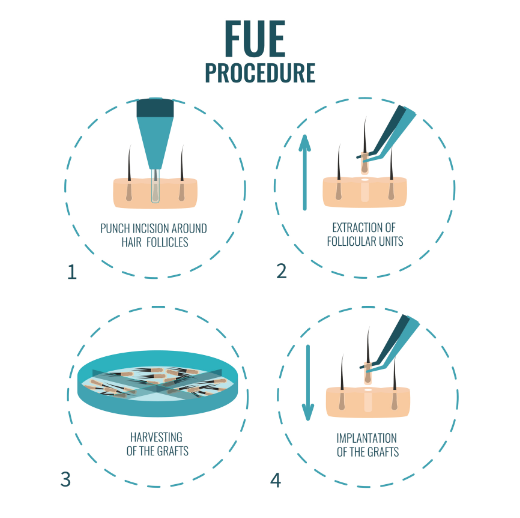 Introduction
One day you wake up and realize that your hair has disappeared. Well, no everywhere but whether it is a receding hairline or a growing bald spot on the crown or your head, you are seeing more skin that hair. What do you do? Historically, for many men and women, the first alternative was disguise – comb your hair in a way that minimizes the amount of visibility of the amount of thinning or baldness. Few will remember Ron Popeil’s (the king of TV inventions and infomercials) Hair Formula #9 – hair in a spray can. The next choice often involved weaves, wigs or toupees for complete coverage. Unfortunately, this alternative rarely looked natural.
Hair transplants became more popular in the 1980s. However, the first phase of this trend involved the transplantation of hair plugs (many follicles in a group like a shrub) in rows on the patient’s head. It was a painful procedure that announced to the world exactly what you were doing. Over time, this process became much more refined but still involved the excision of a strip of hair from the back of the patient’s head. The incision was then stitched closed leaving a significant scar that was visible (especially when swimming) and needed to be covered by the hair that was left.
Follicular Unit Extraction (FUE)
The hair replacement field changed dramatically with the development of FUE. With this procedure, individual follicles are harvested from the back of the head – the area in which hair tends to remain the thickest and healthiest even when losing hair elsewhere. The follicles that are extracted are then individually transplanted into the area of the head targeted for hair replacement. A single follicle may contain a number of individual hairs attached to it.
The procedure involves a careful diagnosis of the current need for hair replacement using the Savin scale (see Figure below). The areas in need of transplant are identified along with the number of follicles that will be needed to obtained the desired coverage. A technician then harvests the areas from the safe area (immune from DHT) in the back of the head and transplants them into the target area on the crown, top of the head or eyebrows.
While there are a number of different FUE devices (e.g. NetGraft, Artus, SmartGraft), Capily Institute recommends the SmartGraft device and procedure as it produces follicles with higher viability for the transplant. Why is this the case? The SmartGraft device allows all follicles to be collected, counted, stored in a sterile temperature-controlled and hydrated environment.
As each follicle is individually extracted it is sent through a tube where it is cleaned and kept in a climate-controlled environment to maintain hydration and viability while waiting to be transplanted. As it can take a few hours for the individual follicles to be harvested, depending on the extensiveness of the transplant procedure, other devices may allow the follicles to dry out, reducing their viability.
Introduction
One day you wake up and realize that your hair has disappeared. Well, no everywhere but whether it is a receding hairline or a growing bald spot on the crown or your head, you are seeing more skin that hair. What do you do? Historically, for many men and women, the first alternative was disguise – comb your hair in a way that minimizes the amount of visibility of the amount of thinning or baldness. Few will remember Ron Popeil’s (the king of TV inventions and infomercials) Hair Formula #9 – hair in a spray can. The next choice often involved weaves, wigs or toupees for complete coverage. Unfortunately, this alternative rarely looked natural.
Hair transplants became more popular in the 1980s. However, the first phase of this trend involved the transplantation of hair plugs (many follicles in a group like a shrub) in rows on the patient’s head. It was a painful procedure that announced to the world exactly what you were doing. Over time, this process became much more refined but still involved the excision of a strip of hair from the back of the patient’s head. The incision was then stitched closed leaving a significant scar that was visible (especially when swimming) and needed to be covered by the hair that was left.
Follicular Unit Extraction (FUE)
The hair replacement field changed dramatically with the development of FUE. With this procedure, individual follicles are harvested from the back of the head – the area in which hair tends to remain the thickest and healthiest even when losing hair elsewhere. The follicles that are extracted are then individually transplanted into the area of the head targeted for hair replacement. A single follicle may contain a number of individual hairs attached to it.
The procedure involves a careful diagnosis of the current need for hair replacement using the Savin scale (see Figure below). The areas in need of transplant are identified along with the number of follicles that will be needed to obtained the desired coverage. A technician then harvests the areas from the safe area (immune from DHT) in the back of the head and transplants them into the target area on the crown, top of the head or eyebrows.
While there are a number of different FUE devices (e.g. NetGraft, Artus, SmartGraft), Capily Institute recommends the SmartGraft device and procedure as it produces follicles with higher viability for the transplant. Why is this the case? The SmartGraft device allows all follicles to be collected, counted, stored in a sterile temperature-controlled and hydrated environment.
As each follicle is individually extracted it is sent through a tube where it is cleaned and kept in a climate-controlled environment to maintain hydration and viability while waiting to be transplanted. As it can take a few hours for the individual follicles to be harvested, depending on the extensiveness of the transplant procedure, other devices may allow the follicles to dry out, reducing their viability.
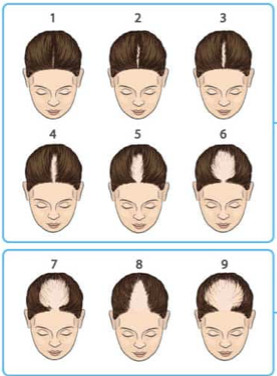 After the desired amount of hair has been harvested, the transplant recipient area is then locally anesthetized. This is the area that you and the Hair Transplant Expert Team had marked together at the very beginning. One hair follicle at a time is transplanted using the device.
It first creates holes for the donor follicles. A scalpel isn’t needed for this step. The hairs are then inserted into these holes. The system ensures the hairs will be placed at the right depth and the correct natural angle. Your transplantation procedure will take around five to six hours. You will go home thereafter and may return to normal social life after 2 days.
When Will The Hair Start To Grow On Its Own?
Your transplanted hair is very likely to fall out soon after the treatment over the next two to three weeks. This can be discouraging, but it is totally natural. This doesn’t mean transplantation failed; it simply is a reaction to the trauma of transplantation. The follicles that survive (usually around 90 percent) will then fully take and will return to the anagen (growth) phase in 3-4 months. As the anagen cycle continues, hair will grow naturally through these transplanted follicles.
Will My Hair Look Natural After Transplantation?
Fully functioning hair follicles are transplanted to your balding areas. As mentioned earlier, these occipital follicles are not susceptible to the reasons that caused your balding, so they will grow hair normally which will be your natural scalp hair. This new hair will thus be immune to future balding.
The Hair Transplant Team achieves the most natural results by ensuring to place the angle of the implanted hair in a natural way for each particular area and also taking care to follow the pattern of a natural hairline.
Recovery After SmartGraft Transplantation
Recovery is easy. There might be mild discomfort around the donor or recipient sites, and occasionally patients take a regular Tylenol for it. Both the donor sites and the transplant sites heal quickly and most people go back to work between 1 – 3 days
You may wash your hair in three days after your procedure. We’ll show you how to wash the transplanted area with water to keep the recipient area clean and to stop it from developing crusts on the implanted follicles; it’s important not to rub the follicles and not to use a towel to dry the area. And…. you are on your way to new youthful hair!
Understanding the causes of your particular hair loss and identifying the stage of hair loss is very important in developing a treatment plan that can range from addressing the underlying cause (medical or hormonal) to topical or surgical alternatives. The doctors associated with the Capily Institute can help diagnose and treat all forms of hair loss, recommending the best strategy for hair restoration or replacement.
After the desired amount of hair has been harvested, the transplant recipient area is then locally anesthetized. This is the area that you and the Hair Transplant Expert Team had marked together at the very beginning. One hair follicle at a time is transplanted using the device.
It first creates holes for the donor follicles. A scalpel isn’t needed for this step. The hairs are then inserted into these holes. The system ensures the hairs will be placed at the right depth and the correct natural angle. Your transplantation procedure will take around five to six hours. You will go home thereafter and may return to normal social life after 2 days.
When Will The Hair Start To Grow On Its Own?
Your transplanted hair is very likely to fall out soon after the treatment over the next two to three weeks. This can be discouraging, but it is totally natural. This doesn’t mean transplantation failed; it simply is a reaction to the trauma of transplantation. The follicles that survive (usually around 90 percent) will then fully take and will return to the anagen (growth) phase in 3-4 months. As the anagen cycle continues, hair will grow naturally through these transplanted follicles.
Will My Hair Look Natural After Transplantation?
Fully functioning hair follicles are transplanted to your balding areas. As mentioned earlier, these occipital follicles are not susceptible to the reasons that caused your balding, so they will grow hair normally which will be your natural scalp hair. This new hair will thus be immune to future balding.
The Hair Transplant Team achieves the most natural results by ensuring to place the angle of the implanted hair in a natural way for each particular area and also taking care to follow the pattern of a natural hairline.
Recovery After SmartGraft Transplantation
Recovery is easy. There might be mild discomfort around the donor or recipient sites, and occasionally patients take a regular Tylenol for it. Both the donor sites and the transplant sites heal quickly and most people go back to work between 1 – 3 days
You may wash your hair in three days after your procedure. We’ll show you how to wash the transplanted area with water to keep the recipient area clean and to stop it from developing crusts on the implanted follicles; it’s important not to rub the follicles and not to use a towel to dry the area. And…. you are on your way to new youthful hair!
Understanding the causes of your particular hair loss and identifying the stage of hair loss is very important in developing a treatment plan that can range from addressing the underlying cause (medical or hormonal) to topical or surgical alternatives. The doctors associated with the Capily Institute can help diagnose and treat all forms of hair loss, recommending the best strategy for hair restoration or replacement. 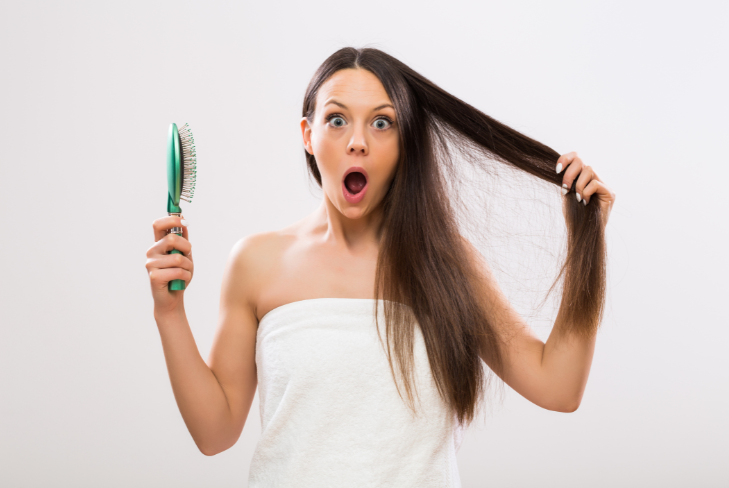 Introduction
If you are worried about losing your hair, you are not alone. Seeing hair collecting in your brush or in the shower drain is not unusual. In fact, statistics from a number of sources indicate that about 25% of men start to see hair loss as early as 21 with the percentage increasing to 66% by 35 and almost 85% for those 50 and over (American Hair Loss Association). Women are also not immune as almost 40% experiencing hair loss are women, with 50 percent experiencing the problem by the time that they reach 50. Women become particularly concerned about hair loss in their eye brows and eye lashes will for men, the problem is more focused on pattern baldness.
On average, we lose approximately 100 hair follicles per day. The total number of hair follicles on average is between 100,000 and 150,000, so 100 does not seem like many. However, as we age, the rate of growth of new hair also declines, according to WebMD. And with 10% of our hair follicles at rest at any one time combined with slower growth and hair loss, thinning areas will appear to increase in size.
The Causes of Hair Loss
Research and studies by organizations such as the American Hair Loss Association and the International Society of Hair Restoration Surgery have identified a wide range of factors that contribute to hair loss. Articles have touted the 21 reasons (health.com), the 10 causes of hair loss in women (prevention.com) and identify the significant causes of hair loss outlined below.
Introduction
If you are worried about losing your hair, you are not alone. Seeing hair collecting in your brush or in the shower drain is not unusual. In fact, statistics from a number of sources indicate that about 25% of men start to see hair loss as early as 21 with the percentage increasing to 66% by 35 and almost 85% for those 50 and over (American Hair Loss Association). Women are also not immune as almost 40% experiencing hair loss are women, with 50 percent experiencing the problem by the time that they reach 50. Women become particularly concerned about hair loss in their eye brows and eye lashes will for men, the problem is more focused on pattern baldness.
On average, we lose approximately 100 hair follicles per day. The total number of hair follicles on average is between 100,000 and 150,000, so 100 does not seem like many. However, as we age, the rate of growth of new hair also declines, according to WebMD. And with 10% of our hair follicles at rest at any one time combined with slower growth and hair loss, thinning areas will appear to increase in size.
The Causes of Hair Loss
Research and studies by organizations such as the American Hair Loss Association and the International Society of Hair Restoration Surgery have identified a wide range of factors that contribute to hair loss. Articles have touted the 21 reasons (health.com), the 10 causes of hair loss in women (prevention.com) and identify the significant causes of hair loss outlined below.
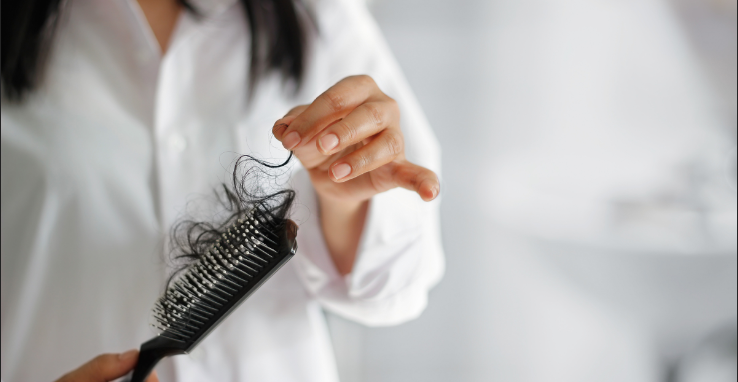 Introduction
As many young men and women start experiencing hair loss in their early 20s, the first question they ask is how can I nip it in the bud? Clearly, a major issue before jumping into solutions is a clear identification of the reasons for the hair loss. Good hair care is always the first step in a process of ensuring healthy hair.
Good Hair Care is the First Step
Before addressing more serious reasons for hair loss, Capily Institute has identified five easy ways to strengthen your hair to both prevent hair loss and stimulate more growth.
Introduction
As many young men and women start experiencing hair loss in their early 20s, the first question they ask is how can I nip it in the bud? Clearly, a major issue before jumping into solutions is a clear identification of the reasons for the hair loss. Good hair care is always the first step in a process of ensuring healthy hair.
Good Hair Care is the First Step
Before addressing more serious reasons for hair loss, Capily Institute has identified five easy ways to strengthen your hair to both prevent hair loss and stimulate more growth.
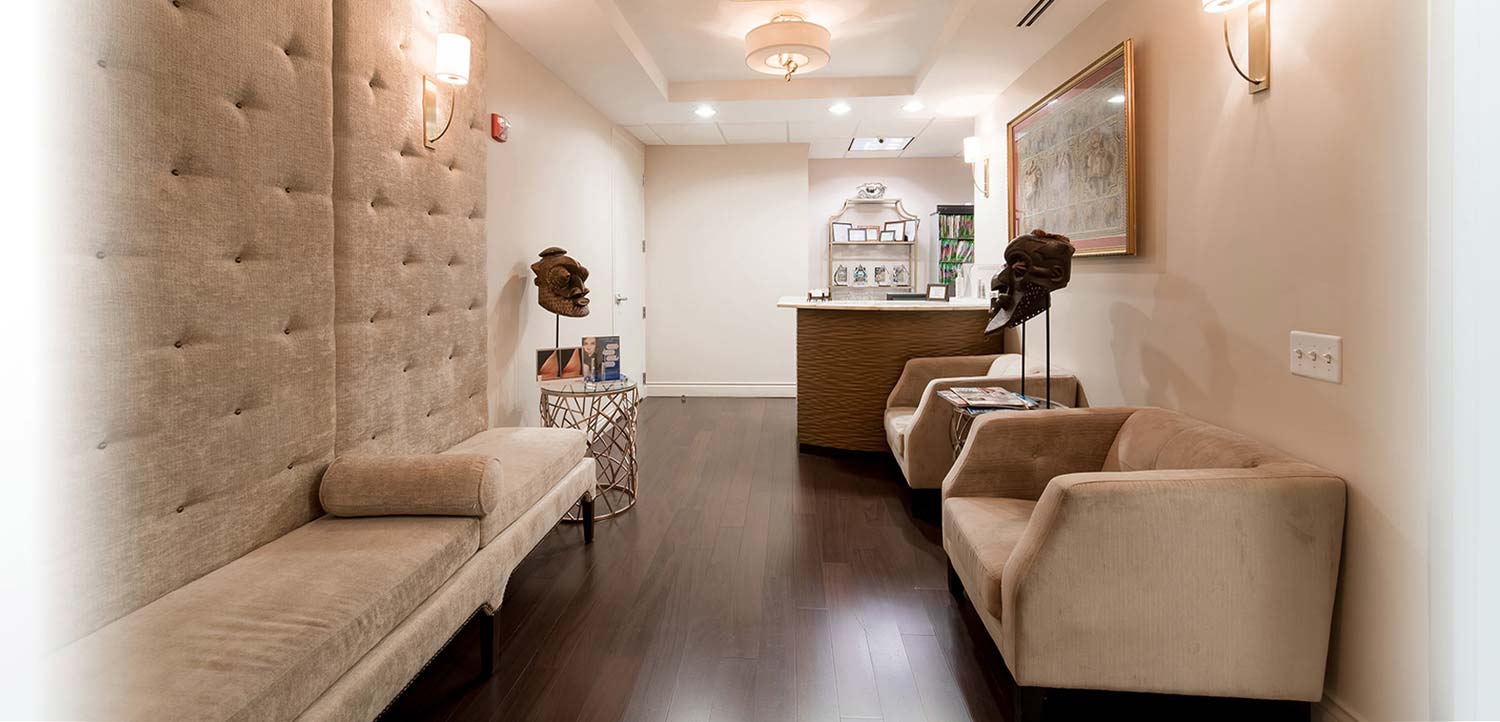
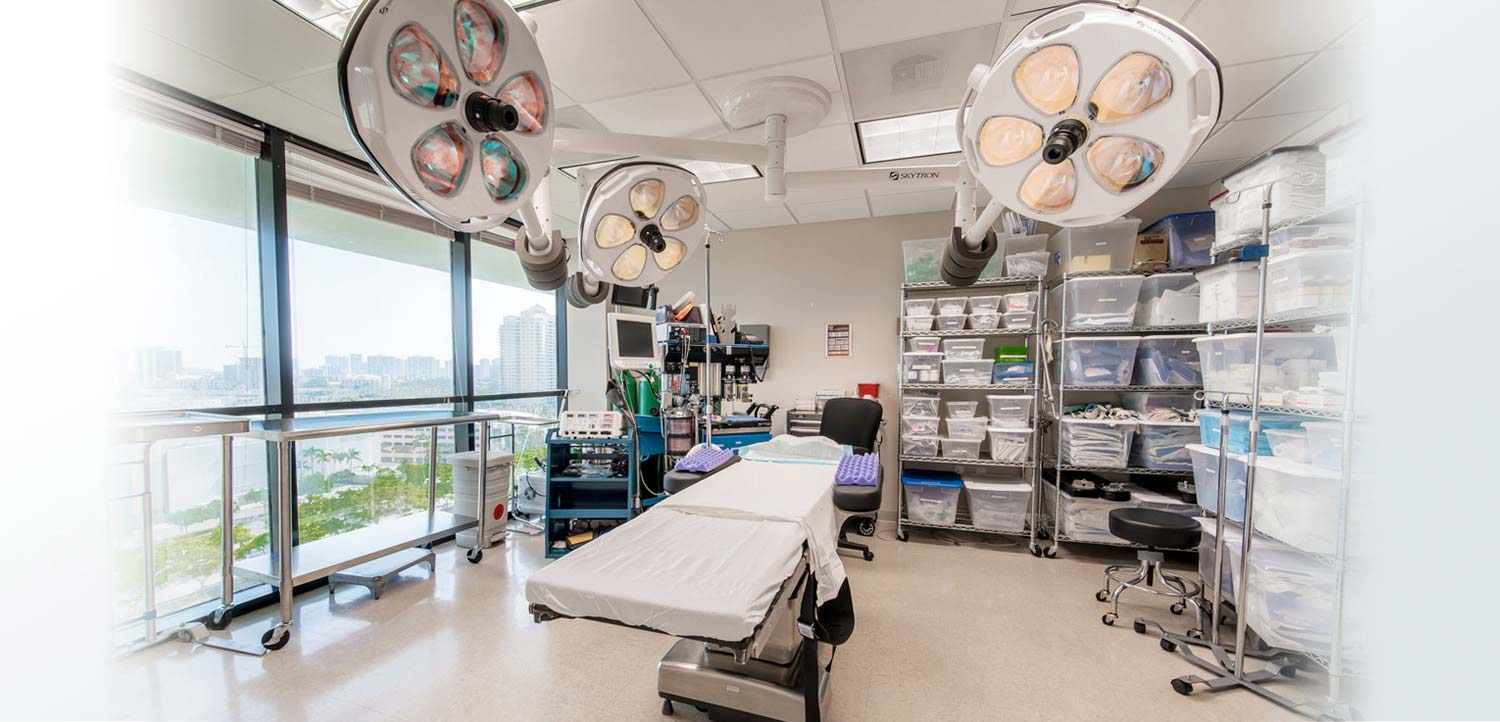
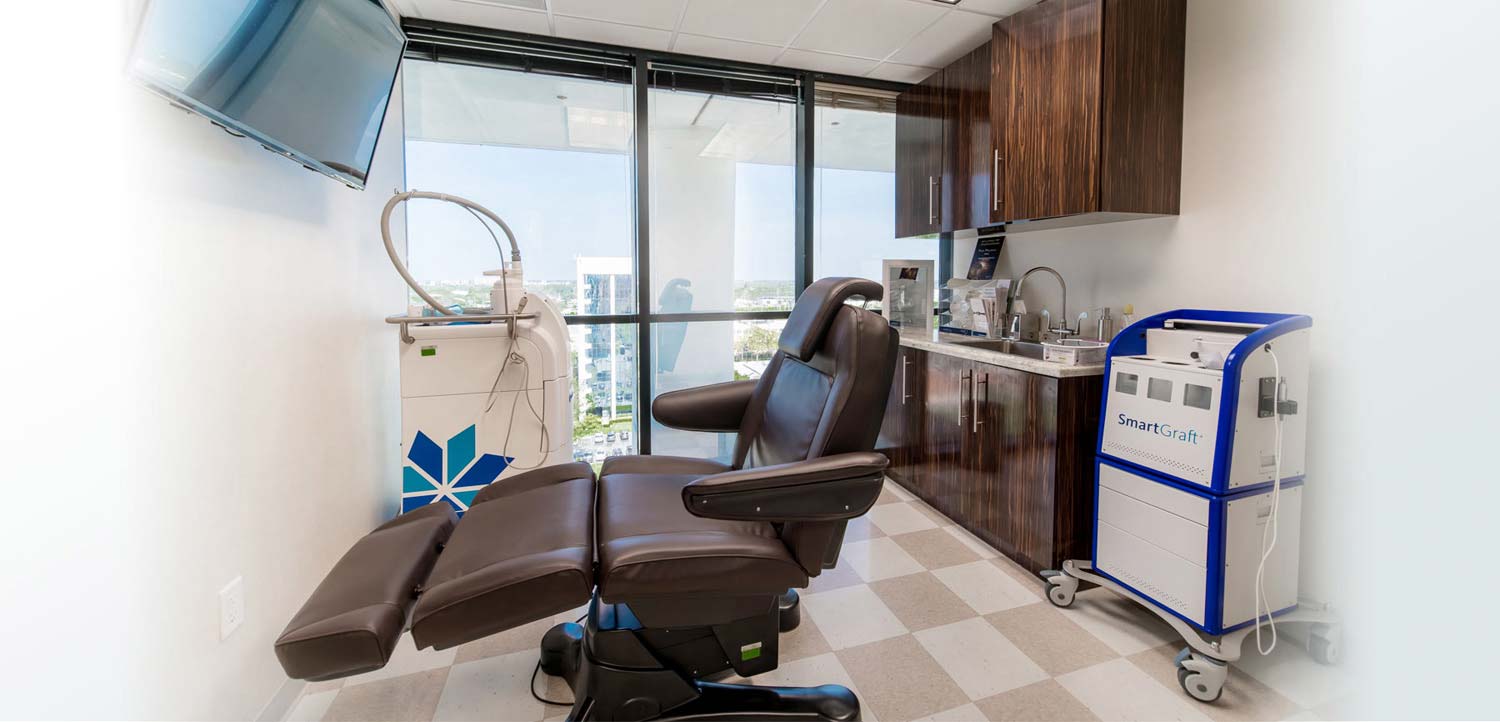

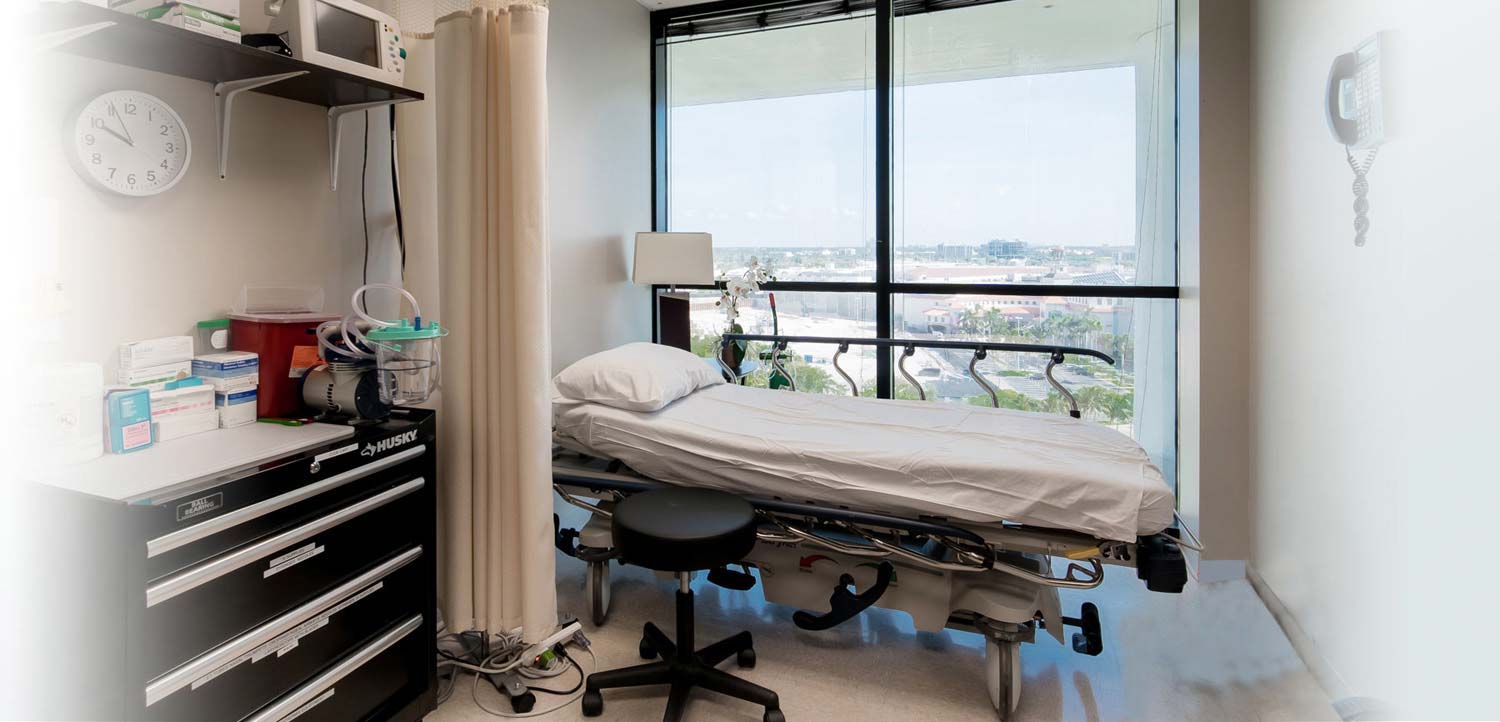








STAY social
Like, follow and share Dr. Rubinstein’s social point view